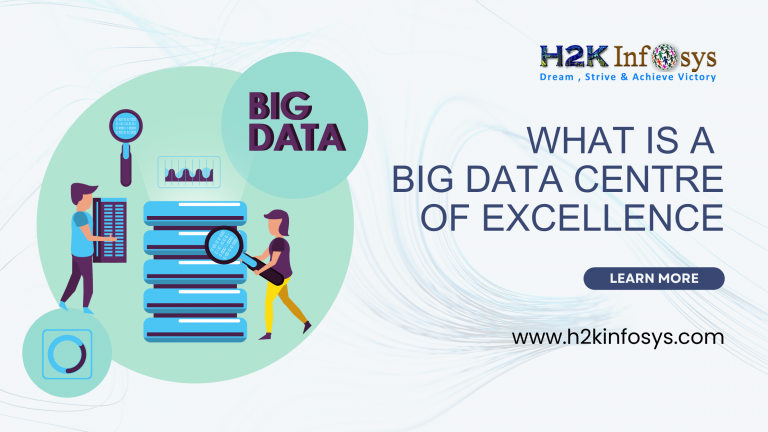An enterprise function known as a Big Data Center of Excellence (BDCoE) helps an organisation go from having little knowledge of Big Data technology and processes to having a fully operational practice that produces solid business results. A BDCoE is where the company finds new technology, acquires new competencies, and creates suitable procedures that are then implemented across the company’s other business divisions.
The central engine room for all things data in a firm is a Big Data Center of Excellence (BDCoE). The entire company’s data transformation procedure is managed by the Center of Excellence. It makes sure that the information gathered via various channels is filtered, converted, and integrated to create a single source of truth for the organisation’s data, which can then be accessed by experts in various business domains like marketing, finance, and human resources. A professional in these commercial domains will possess the necessary skills to see patterns, discern insights, and arrive at judgments based on data. The organisation may simply share, reproduce, and execute insights and trends discovered by many teams due to the unified perspective of the data.
For the organisation to implement big data more quickly and methodically, a BDCoE is necessary. It significantly shortens the time to market for innovative data-driven goods and services by reducing installation times. More significantly, it makes sure that various teams within the company are sharing best practices and processes. A BDCoE ought to be an active, dynamic organisational function that develops and widens in response to shifting organisational requirements.
Building a data-driven organisation that views data as a strategic asset can start with a centralised BDCoE. In order to determine which projects should be prioritised and what data is strategically important, the BDCoE can collaborate with the company. In this sense, it serves as the business’s strategic equivalent, converting real-time and actionable Big Data initiatives from current and genuine business requirements. The value that big data offers to the company is what gives it strategic significance, but big data success is about more than simply data. In addition, the organisation and its members are essential to its success. Check out the online Big Data course to learn more.
Five main pillars make up an effective BDCoE, and they collectively provide the framework for deriving value from the centralised function.
1.Big Data Teams
To create success with big data, the most crucial component is the calibre of the big data scientists, engineers, and analysts. Big Data is ultimately a knowledge domain, and people are the source of that knowledge. It is imperative that big data experts have certification, expertise, and a proven track record of working with data.
2.Big Data Labs
Big Data labs are the terms used to describe the BDCoE’s workspace. Since the setting should be a creative area to experiment and execute test data analysis in order to get the desired outcomes, there is a purposeful connection between data science and a lab.
Open work areas that facilitate communication and teamwork are combined with private workspaces that provide data analysts with the quiet space they need to “crunch the numbers.”
Having hardware that is compatible with big data processing is a second essential need for Big Data laboratories. Big Data processing typically requires hardware in labs to have RAM that is greater than usual.
3.Big Data Proof-of-Concepts
Proof-of-concepts (POCs) are demonstration products that can be given to clients outside of the company as well as internal business units. The proofs of concept (POCs) have to exhibit a lucid return on investment and evince the Big Data Centre of Excellence’s competence in accomplishing the desired outcomes.
Customers or internal business units typically request proof-of-concept in response to particular Big Data queries (explained in section 6.2, the initial stage of the Bid Data analysis process). Through the presentation of well-defined Proof-of-Concepts for possible use cases, the BDCoE may exhibit its expertise inside the company.
4.Agile Methodology
To fully utilise the potential of big data, one must be harnessed agile and have the capacity to fail quickly or produce results quickly. With the help of an agile working approach, results can be produced in two to three-week sprints, usually with transparency. One of the most important Big Data opportunities is the capacity for quick failure; in contrast to a traditional waterfall system, business and technological roadmaps for value delivery must be updated more frequently.
5.Charging Models
The charge models that support the (sometimes substantial) expenditures in the people, procedures, and technology of the Big Data Center of Excellence are the foundation of the organisation. To demonstrate value, a methodical plan for billing other departments or outside customers for completed work must be developed.
It is possible to develop charging models that are based on subscriptions, data processing volumes, user counts, or report frequency. A reasonable and clear pricing structure will be crucial in demonstrating BDCoE’s worth to the company.
Conclusion To learn more about Big Data Center of Excellence, check out the Big Data online training.






























